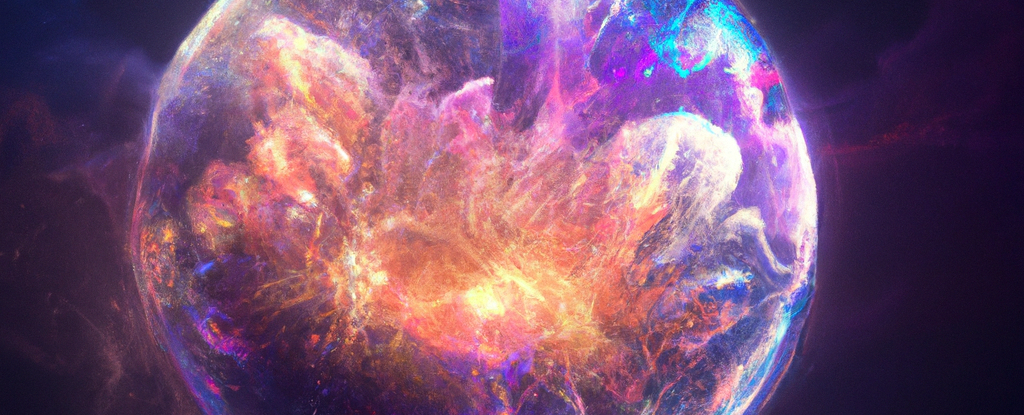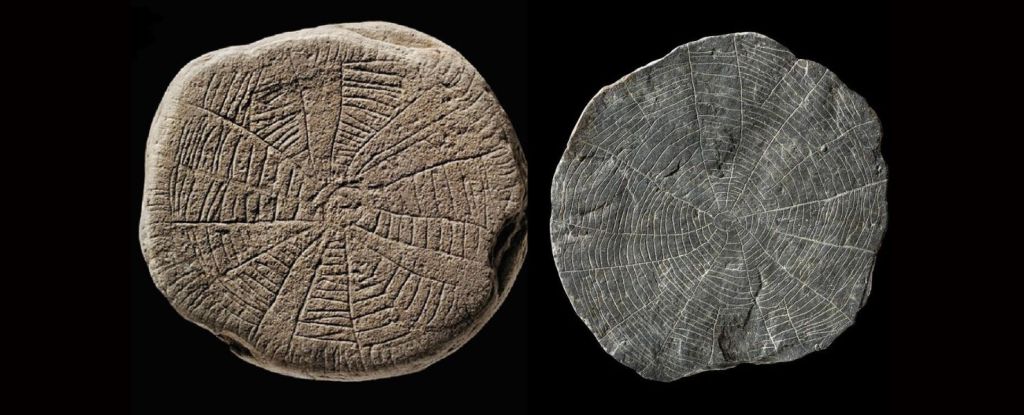The colossal explosion resulting from the merger of two neutron stars has an unexpectedly perfect shape.
According to a new analysis of the consequences of a historical neutron star collision The kilonova explosion observed in 2017, produced by the two stars, was a completely symmetrical, almost perfect sphere. And astronomers just don’t know why. It contradicts all previous assumptions and models of Kilonovae.
“Nobody expected the explosion to look like this. It doesn’t make sense that it’s spherical, like a sphere.” says astrophysicist Darach Watson of the Niels Bohr Institute in Denmark.
“But our calculations clearly show that it is. That probably means that the theories and simulations of kilonovae that we have considered for the past 25 years are missing important physics.”
We rarely see neutron star collisions. This 2017 blast, dubbed GW170817, was not only the first to be recorded, it is also undefeated in detail. From this we have learned a number of things about the universe. For example, these collisions are a source of gamma-ray bursts, the most energetic light in the universe. The resulting kilonova blasts are also factories for making heavy elements like gold and platinum.
But there’s a lot about her that we don’t know yet. Fortunately, so much data has been collected from GW170817 that scientists are still going through it all and will continue to do so for some time. This prompted Niels Bohr Institute astrophysicist Albert Sneppen and his colleagues to embark on a project to characterize the shape of the kilonova.
This is because the geometry of the explosion is governed by the properties of the ultradense matter that makes up neutron stars, and can help scientists better understand the energy of the explosion and other properties of the merger.
They thought they knew roughly what they would find and that their job would be to put more detailed constraints on the known properties. The spherical explosion they actually found suggests that our understanding of neutron star mergers is lacking.
“You have two super-compact stars that orbit each other 100 times per second before collapsing. Our intuition and all previous models say that the blast cloud created by the collision must have a flattened and rather asymmetrical shape.” says Schneppen.
“The most likely way to make the explosion spherical is when a large amount of energy blows out of the center of the explosion, smoothing out a shape that would otherwise be asymmetric. So the spherical shape tells us that there is probably a lot of energy at the core of the collision, which was unforeseen.”
There is a possible explanation for this. Neutron stars are what stars of a given mass can transform into after they have used up all the fusion fuel in their core. When a star reaches this point, it ejects its outer material and the core collapses into an ultradense object.
Smaller stars become white dwarfs with up to about 1.4 times the mass of the Sun. Mid-range stars turn into neutron stars with up to about 2.4 times the mass of the sun. And more massive stars are increasing black holes.
frameborder=”0″ allow=”accelerometer; autoplay; write clipboard; encrypted media; gyroscope; picture in picture; web-share” allowfullscreen>
When two neutron stars collide, the combined mass causes the newly formed object to gravitationally collapse further, turning into a black hole. But for a short time before this happens, the can become an object a hypermassive neutron star with an extremely strong magnetic field. Recent analysis suggests this is what happened with GW170817. just for a second The object was a hypermassive neutron star.
This could explain the spherical kilonova, the researchers say.
“Perhaps the moment energy is released from the hypermassive neutron star’s enormous magnetic field as the star collapses into a black hole, a kind of ‘magnetic bomb’ is created.” Watson explains.
“The release of magnetic energy could cause matter in the explosion to become more spherically distributed. In that case, the birth of the black hole could be very energetic.”
A few questions remain, however, particularly about how heavy elements are forged in the Kilonova. We know it happens; After the explosion, scientists made it clear Detection of strontium in kilonova ejecta.
In their analysis of the kilonova, Sneppen’s team found a nearly spherically symmetric distribution of strontium, which is one of the lighter of the heavy elements. However, models suggest that heavier elements such as gold and uranium should form at different locations in the kilonova than the lighter ones. This, the team believes, suggests that neutrinos be involved.
“An alternative idea is that the hypermassive neutron star emits very strongly in the milliseconds that it lives, possibly including a large number of neutrinos,” says Schneppen.
“Neutrinos can cause neutrons to transform into protons and electrons, creating lighter elements overall. This idea also has flaws, but we believe that neutrinos play an even more important role than we thought.”
It is possible that more than one mechanism is at play. Hopefully, catching more neutron star collisions in the future could help uncover them.
The research was published in Nature.





